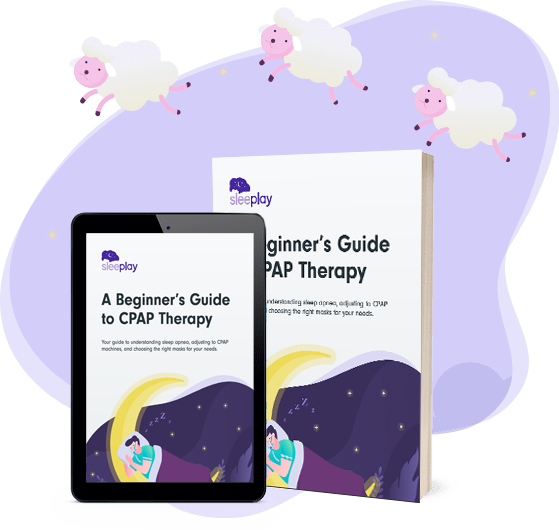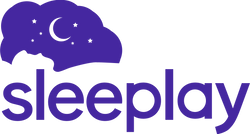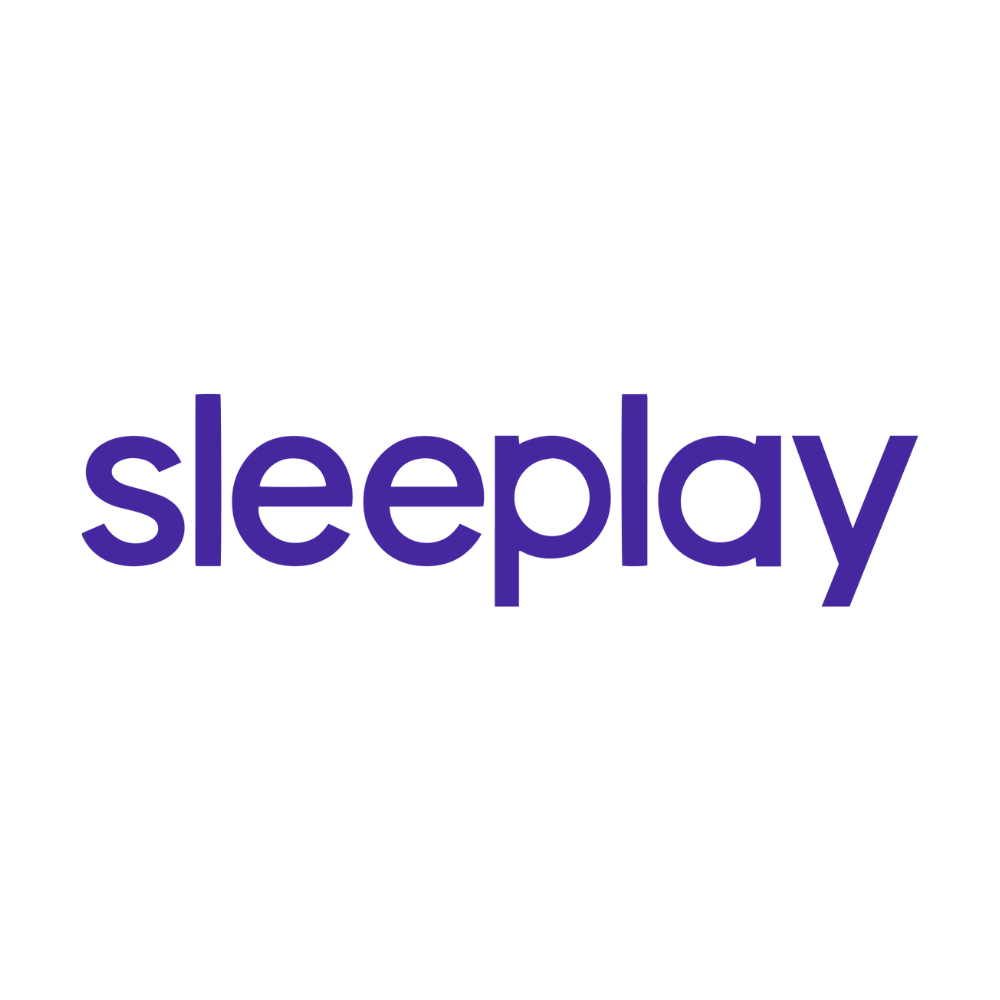How Does Sleep Apnea Affect Work Performance
Sleep is an essential part of our health, and getting adequate sleep each night allows for the proper functioning of our immune and cardiovascular systems and our ability to learn new things and focus at work.
If you or any of your employees have a sleep disorder that doesn’t allow them to have a full night of restful sleep, such as sleep apnea, their work performance will decrease over time.
Continue reading to learn more about how sleep apnea can affect your work performance and how you can fight the negative effects of sleep apnea.
Can Sleep Apnea Affect Work Performance?
Sleeping for seven to nine hours per night is essential for our health and well-being, but many people struggle to get enough sleep. A study found that a third of adult Americans don’t get enough sleep on a consistent basis, resulting in excessive sleepiness and decreasing their work performance. There are many reasons and health conditions why people may have poor sleep quality, but one of the most common causes is sleep apnea.
Sleep apnea is a type of sleep-disordered breathing that causes pauses in your breathing while you sleep, resulting in reduced oxygen levels and disrupted sleep cycles. The most common type of sleep apnea is obstructive sleep apnea (OSA), which occurs when the muscles in the back of the throat relax and fail to keep the upper airway open.
OSA affects around 25% of men and 10% of women in the US. Around 425 million people worldwide live with moderate to severe OSA.
Some of the risk factors that increase the prevalence of sleep apnea are obesity—the higher the body mass index, the higher the risk of OSA-, older age, and certain medical conditions, such as high blood pressure and type 2 diabetes.
Central sleep apnea (CSA) is much less common than OSA, and it occurs when the brain can’t send signals to the muscles that control breathing for them to function properly.
The severity of your sleep apnea can be assessed with a sleep apnea test through the apnea-hypopnea index (AHI). An AHI of at least 30 classifies a severe sleep apnea syndrome.
Untreated sleep apnea can have serious consequences on the work performance of sleep apnea patients. Some effects of sleep apnea on work performance include:
Excessive daytime sleepiness:
Reduced cognitive function:
Poor mental health:
The symptoms of sleep apnea can result in irritability and stress. These negative emotions can affect work performance by reducing motivation, satisfaction, and effective communication with others.
Untreated sleep apnea doesn’t only affect your work performance; it also creates a higher risk of developing heart disease, and it can contribute to weight gain by increasing appetite and decreasing metabolism.
What Professions Are Most Affected by Sleep Apnea?
Truck drivers
Healthcare workers
First responders
Shift workers
People who work in industries that operate around the clock, such as aviation, construction, manufacturing, military and security, often have irregular or rotation schedules, known as shift work, that interfere with their natural sleep patterns. Shift workers with sleep apnea may struggle to adapt to changing sleep times, impairing their physical and mental health.

Sleep apnea can affect anyone regardless of their profession. However, some occupations may pose higher risks or challenges for people with this condition.
If you suspect you may have sleep apnea, you can take our sleep apnea questionnaire or home sleep study, the WatchPAT One, to diagnose your sleep apnea in the comfort of your home.
How Much Does Sleep Apnea Cost the Economy?
WatchPAT OneAccording to the American Academy of Sleep Medicine (AASM), obstructive sleep apnea (OSA) is the most prevalent sleep disorder, affecting around 12% of the US adult population.
The burden of undiagnosed cases of OSA represents almost $150 billion per year, which includes:
• 86.9 billion in lost productivity and excessive absenteeism
•26.2 billion in motor vehicle accidents
•6.5 billion in workplace accidents
•30 billion in increased healthcare utilization and medication costs related to comorbid health risks, such as hypertension and type 2 diabetes.
To lower this burden, when an employee is struggling to stay awake at work or when their productivity begins to decline because of sleep deprivation, their employers should recommend or offer to get diagnosed for sleep apnea. The right treatment for sleep apnea will not only increase their overall health, but also their productivity, job safety and profits.
Also, if your job involves driving a commercial motor vehicle, even though the Federal Motor Carrier Safety Administration (FMCSA) doesn’t require a sleep apnea test during your Department of Transportation (DOT) physical, your medical provider can determine whether you must be medically certified to drive. If you’re diagnosed with sleep apnea before or during your DOT physical, you must prove compliance with the recommended therapy for at least 90 days.

Can Treating Sleep Apnea with a CPAP Machine Improve Your Job Performance?
The AASM has noted that continuous positive airway pressure (CPAP) therapy not only improves sleep health but also positively impacts job performance and decreases workplace absenteeism.
If sleep deprivation is making you less productive at your job and is affecting other aspects of your life, it’s time to take action and follow these steps:
Talk to a Sleep Specialist
If you’re concerned about your sleep health, the first thing you should do is get an appointment with your primary healthcare provider or with a sleep medicine physician to discuss whether you show symptoms of sleep apnea.
Get a Diagnosis
WatchPAT OneThere are two sleep apnea tests: in-lab and home tests. An in-lab sleep test, also called a polysomnogram, is done in a special room at a hospital or a sleep clinic, where the patient needs to stay overnight. It records many signals from your body, such as brain waves, eye movements, heart rate, breathing, blood oxygen levels and muscle activity. This type of test can diagnose different types of sleep disorders, such as sleep apnea, narcolepsy, restless leg syndrome and insomnia.
A home sleep test is done with a portable device that you use in your own bed. It usually only records your breathing and oxygen levels. These are mainly used to diagnose obstructive sleep apnea. If you have a hard time sleeping outside your home or simply want to avoid the hassle of going to a health center to get the sleep test done, the WatchPAT O our home sleep test, is a great option!
Start Your Treatment
If you’re diagnosed with sleep apnea, CPAP therapy is the most effective treatment. CPAP machines deliver pressurized air to your upper airway through a mask that covers your nose, mouth or both while you sleep, keeping your upper airway open and preventing apnea episodes. CPAP therapy can reduce snoring and daytime sleepiness and lower your blood pressure.

Other treatment options for OSA are oral appliances that move your jaw forward and open your airway while you sleep daytime CPAP therapy devices, and surgery to remove excess tissue in and around your upper airway, which is usually used in the rare and severe OSA cases in which CPAP therapy fails.
The best treatment for sleep apnea depends on your individual clinical situation and preferences. Consult with your doctor to get a customized treatment plan, which may also include lifestyle changes to improve your symptoms of sleep apnea, such as losing weight, quitting smoking, avoiding alcohol and sedatives, or using nasal sprays or strips.
Tips for Better Sleep
If you have sleep apnea or are struggling to get enough high-quality sleep to feel your best in your day-to-day life, here are some tips that can help you sleep better and longer:
Prioritize Sleep
Don’t let other activities interfere with your sleep schedule. Whether it’s socializing, watching TV or looking at your phone, if it’s not important to you, don’t do it at the expense of your sleep time.
Ask for Help at Work
If your work schedule disrupts your sleep, you may need to talk to someone who can help you solve that. Contact the human resources department or speak with your direct supervisor and discuss possible solutions, such as adjusting your hours or working from home.
Practice Good Sleep Hygiene
Sleep hygiene is about creating a routine and environment that supports your sleep. Some of the things that you can do to improve your sleep hygiene are sticking to a regular sleep schedule, avoiding caffeine and alcohol before bed, keeping your bedroom dark and quiet, and avoiding the use of electronic devices in the evening.
FAQs
Can You Get Disability Benefits for Sleep Apnea?
The Social Security Administration (SSA) doesn’t recognize sleep apnea as a disability. However, it includes breathing disorders in its listing of impairments that may qualify for disability benefits. If you meet the criteria of a SSA listing because of your sleep apnea, you could be eligible for disability benefits.
Alternatively, if your sleep apnea has caused other severe health conditions that interfere with your ability to work, such as chronic heart failure, depression or cognitive impairment, you may be able to get disability benefits based on your residual functional capacity (RFC).
Your RFC assesses what you can still do despite your limitations. The SSA will consider your medical records, symptoms, treatment and work history to determine your RFC and whether you can perform any type of work.
Can I Apply for FMLA for Sleep Apnea?
The Family and Medical Leave Act (FMLA) is a federal law that allows eligible employees to take up to 12 weeks of unpaid leave per year for certain medical or family reasons. The FMLA also protects your job and health insurance while on leave. To be eligible for FMLA leave for sleep apnea, you must meet certain criteria:
- • You must work for a covered (public or private) employer with 50 or more employees within 75 miles of your worksite.
- • You must have worked for the employer for at least 12 months.
- • You must have worked at least 1,250 hours during the 12-month period immediately preceding the start of your FMLA leave.
Additionally, you must have a serious health condition that makes you unable to perform the essential functions of your job for the whole year. Sleep apnea may qualify as a serious health condition if it requires inpatient care or continuing treatment by a healthcare provider. You’ll need to provide medical certification from your doctor that confirms your diagnosis and the need for leave.
What Are Sleep Apnea Employment Rights?
Depending on the nature and severity of your sleep apnea, you may have some rights under the Americans Disabilities Act (ADA). The ADA requires employers to provide reasonable accommodations to qualified employees with disabilities unless doing so would cause undue hardship to the employer.
If you have a disability due to sleep apnea, you may request reasonable accommodations from your employer to help you perform your job duties. Some examples of reasonable accommodations for sleep apnea are:
- •Flexible work hours
- •Breaks or naps during the day
- •A quiet or private workspace.
You’ll need to provide documentation from your doctor supporting your accommodations request. Your employer may also ask for additional information or suggest alternative accommodations that are effective and feasible.

How Much Time Can I Take off Work Because of Sleep Apnea?
The amount of time you can take off work because of your sleep apnea depends on several factors, such as the type and severity of your sleep apnea, the policies and procedures implemented by your employer, and the laws and regulations that apply to your situation.
Before taking any time off work because of your sleep apnea, consult your doctor and employer to discuss your options and expectations. It is recommended to keep a record of your medical appointments and treatments and communicate with your employer in case of any disputes or issues.
Can I Get Fired for Having Sleep Apnea?
The answer to this question depends on the specific circumstances of your case. Generally speaking, you can’t be fired for having sleep apnea if:
- •You have a disability due to sleep apnea and you can’t perform the essential functions of your job with or without reasonable accommodations.
- •You have taken an FMLA leave for sleep apnea, and you haven’t exhausted your 12-week entitlement.
- •You haven’t violated any legitimate rules or policies established by your employer.
However, you may be fired for having sleep apnea if:
- •You don’t have a disability due to sleep apnea, and your sleep disorder affects your work performance or safety.
- •You have exhausted your FMLA leave for sleep apnea and cannot return to work.
- •You have refused or failed to comply with the treatment plan prescribed by your doctor.
- •You have engaged in gross misconduct or serious violations of your employer’s rules or policies.
If you think you have been fired for having sleep apnea unfairly or illegally, you may pursue legal options such as filing a complaint with the Equal Employment Opportunity Commission or the Department of Labor or consulting with an experienced employment lawyer who can advise you on the best course of action for your case.
Sleep apnea may pose a challenge for workers and their employers across several industries. However, sleep apnea and its negative consequences on work performance can be effectively managed with proper treatment.
At Sleeplay, we offer premium sleep apnea products to help you get better rest. Check out our CPAP machines and contact us so we can assist you in your journey to locate the right one for you or your team.
Join the conversation!, login and comment.

Get your guide to understanding sleep apnea, adjusting to CPAP machines, and choosing the right masks for your needs.


